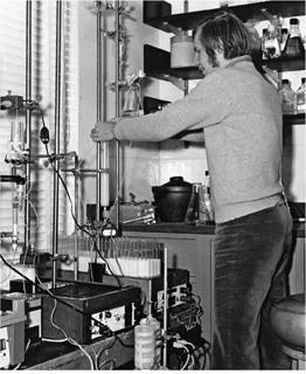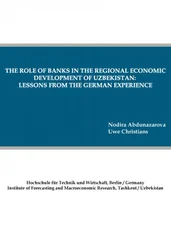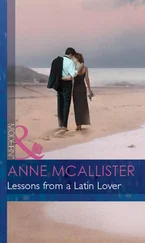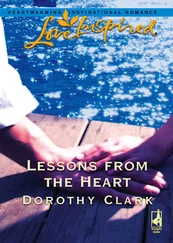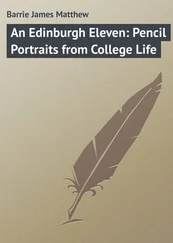James Watson - AVOID BORING PEOPLE - Lessons from a Life in Science
Здесь есть возможность читать онлайн «James Watson - AVOID BORING PEOPLE - Lessons from a Life in Science» весь текст электронной книги совершенно бесплатно (целиком полную версию без сокращений). В некоторых случаях можно слушать аудио, скачать через торрент в формате fb2 и присутствует краткое содержание. Жанр: Биографии и Мемуары. Описание произведения, (предисловие) а так же отзывы посетителей доступны на портале библиотеки ЛибКат.
- Название:AVOID BORING PEOPLE: Lessons from a Life in Science
- Автор:
- Жанр:
- Год:неизвестен
- ISBN:нет данных
- Рейтинг книги:5 / 5. Голосов: 1
-
Избранное:Добавить в избранное
- Отзывы:
-
Ваша оценка:
- 100
- 1
- 2
- 3
- 4
- 5
AVOID BORING PEOPLE: Lessons from a Life in Science: краткое содержание, описание и аннотация
Предлагаем к чтению аннотацию, описание, краткое содержание или предисловие (зависит от того, что написал сам автор книги «AVOID BORING PEOPLE: Lessons from a Life in Science»). Если вы не нашли необходимую информацию о книге — напишите в комментариях, мы постараемся отыскать её.
AVOID BORING PEOPLE: Lessons from a Life in Science — читать онлайн бесплатно полную книгу (весь текст) целиком
Ниже представлен текст книги, разбитый по страницам. Система сохранения места последней прочитанной страницы, позволяет с удобством читать онлайн бесплатно книгу «AVOID BORING PEOPLE: Lessons from a Life in Science», без необходимости каждый раз заново искать на чём Вы остановились. Поставьте закладку, и сможете в любой момент перейти на страницу, на которой закончили чтение.
Интервал:
Закладка:
Back in the lab my first research problem from Luria was to see whether phages inactivated by X-rays could still undergo genetic recombination and produce viable recombinant progeny lacking the damaged genetic determinants present in the parental phages. Two years earlier, Luria had discovered that phages inactivated by ultraviolet light did so recombine when two or more infected the same E. coli host cell. It was to further analyze “multiplicity reactivation” that Luria had brought Dulbecco over from Italy, and he now hoped I could extend his discovery by using X-rays to produce genetic damage. From my first experiment, I began to get positive results, and
Luria would regularly look over my notebooks to convince himself that I had done the experiments correctly.I had to briefly interrupt my experiments when my turn came to give a formal lecture before the zoology faculty. All beginning students were expected to give one during their first year as practice for later careers likely to involve some form of teaching. Since I had come to IU for a zoology degree, I prepared a talk on birds that summarized the conclusion of Darwin's Finches, the new book by the English ornithologist David Lack. Just before the war, he had lived on the Galapagos Islands to follow up Charles Darwin's bird observations of a hundred years before, which had led Darwin to question the immutability of species.
A week after my talk, I first met Max Delbrück. On his way back from a visit at Princeton with his great hero, the Danish theoretical physicist Niels Bohr, he came to spend several days with Luria to learn how the experiments on multiplicity reactivation were progressing. Max was not at all the middle-aged, balding, somewhat overweight German academic I was expecting. Instead my first visit to Luria's flat, several blocks to the south of the main campus, brought me face-to-face with a man who looked more like a fellow student. Max, then forty-one, had come to the United States in 1936, when he was thirty. As a member of the German Protestant academic elite, he was first excited by astronomy. But by twenty, his interests had shifted to theoretical physics, as quantum mechanics was coming into existence. After obtaining at Göttingen his Ph.D. at twenty-four, he spent several years at Copenhagen, the world center for theoretical physics, under Bohr's tutelage. Returning in 1932 to Berlin to work in the great chemist Otto Hahn's Kaiser Wilhelm Institute, Delbrück became acquainted with the Russian-born Drosophila geneticist N. Timofeeff-Ressovsky, who was then using X-rays to induce mutations in Drosophila with the help of the physicist K. G. Zimmer. Discussions among the three of them led to their seminal 1935 paper “On the Nature of Gene Mutation and Gene Structure,” whose ideas formed the core of Erwin Schrödinger's What Is Life?
To move up the German academic ladder, Delbrück needed to demonstrate ideological correctness to the Nazi bureaucracy. Failing
to do this, in the fall of 1936 he seized upon an offer from the Rockefeller Foundation of a fellowship that would let him work at Caltech. There T. H. Morgan and his now also famous coworkers, Alfred Sturtevant and Calvin Bridges, had moved in 1929. But after his arrival in Pasadena, Delbrück found Drosophila boring and instead turned to working with the physical chemist Emory Ellis on phages in the basement of the biology building. When the war came, as a German alien he was not eligible for war research. Instead, with continuing Rockefeller support, he moved to Vanderbilt University as an instructor of physics. His collaboration with Luria began soon after Luria's arrival in New York City from Italy. During the summers of 1941 and 1942, they did research at the Biological Laboratory at Cold Spring Harbor on Long Island's North Shore. During the following winter months, Luria came temporarily to Nashville as a Guggenheim Fellow before assuming his position at IU early in 1943.At supper, Delbrück and Luria talked fondly of their collaboration, particularly at Cold Spring Harbor. Earlier Luria had told me that he would be spending the following summer there and invited Dulbecco and me to accompany him. Delbrück also would be returning, as he had done every summer since 1941.1 listened attentively to talk about the summer course on phages that Delbrück had started in 1945. The summer before, the course had attracted Leo Szilard, the Hungarian physicist, whose name would be forever linked with Enrico Fermi's for their creation of the first sustained nuclear reaction at the University of Chicago in 1942. Luria and Delbrück spent the day after that dinner talking about phages before playing doubles tennis with Dulbecco and me. I became acutely aware that I would have to elevate my game greatly if I was ever to play singles with Delbrück.
Summer had effectively arrived in Bloomington, with the late May daytime temperatures in Luria's inadequately air-conditioned attic lab often too high for our agar plates to gel quickly. Doing more experiments that term made little sense, even when the temperatures temporarily dipped, and besides, I was preparing for my math finals. I wasn't worried about Advanced Calculus. Graves had let us know that all graduate students would get at least a B for staying in the course (by
then all the undergraduates had dropped out). But Differential Equations with Professor Kenneth Williams was another matter. Everyone knew that his real passion had long since become the Civil War and his books on the topic, for which he had received much acclaim. I had no rapport with him, finding him mean-spirited when not boring, and was relieved to get off with a B-.
Max Delbrück with Salvador Luria and his coworker Frank Exner at Cold Spring Harbor symposium, 1941
I was in high spirits when I briefly returned home on my way to Cold Spring Harbor and my first trip to the East Coast. The year had exceeded even my highest hopes, since I was now in the thick of the quest to understand the gene. I became more than aware of the advantages of having attended the University of Chicago, where I had learned the need to be forthright and call crap crap. It was not that I was inherently brighter than my fellow graduate students; I was just much more comfortable challenging ideas and conventional wisdom, whether it concerned politics or science. And never forgetting Robert Hutchins's wisdom that the academic world abounds in triviality, I was ever mindful of what sort of work would further my career and what would be merely idle learning.
Remembered Lessons
1. Choose a young thesis adviser
The older the scientist you choose to do your Ph.D. thesis with, the more likely you will find yourself working in a field that saw its better days a long time ago, possibly before you were born. Even when a mature scientist still has all his marbles, he often wants to put more bricks into an edifice that already has enough rooms. This was most certainly the situation with H. J. Müller when he came to Indiana. Though his lectures had much to offer graduate students, the heyday of research like his had long passed, which meant there were no obvious good job prospects for those now working with him. Young professors in contrast are generally hired not for grandeur but because they represent a new intellectual thrust not present in a department, one with hopes of remaining lively over at least the next decade. Moreover, they are likely to have smaller research groups than more senior professors, around whom funds as well as stodgier minds tend to aggregate. I most certainly profited from being Salva Luria's first Ph.D. student and not having to share his attention with other students. Then just expecting his first child, Luria did not yet have the family man's demands on his time, and so even on weekends he was frequently in his lab office, his work proceeding as fast as humanly possible.
Читать дальшеИнтервал:
Закладка:
Похожие книги на «AVOID BORING PEOPLE: Lessons from a Life in Science»
Представляем Вашему вниманию похожие книги на «AVOID BORING PEOPLE: Lessons from a Life in Science» списком для выбора. Мы отобрали схожую по названию и смыслу литературу в надежде предоставить читателям больше вариантов отыскать новые, интересные, ещё непрочитанные произведения.
Обсуждение, отзывы о книге «AVOID BORING PEOPLE: Lessons from a Life in Science» и просто собственные мнения читателей. Оставьте ваши комментарии, напишите, что Вы думаете о произведении, его смысле или главных героях. Укажите что конкретно понравилось, а что нет, и почему Вы так считаете.
